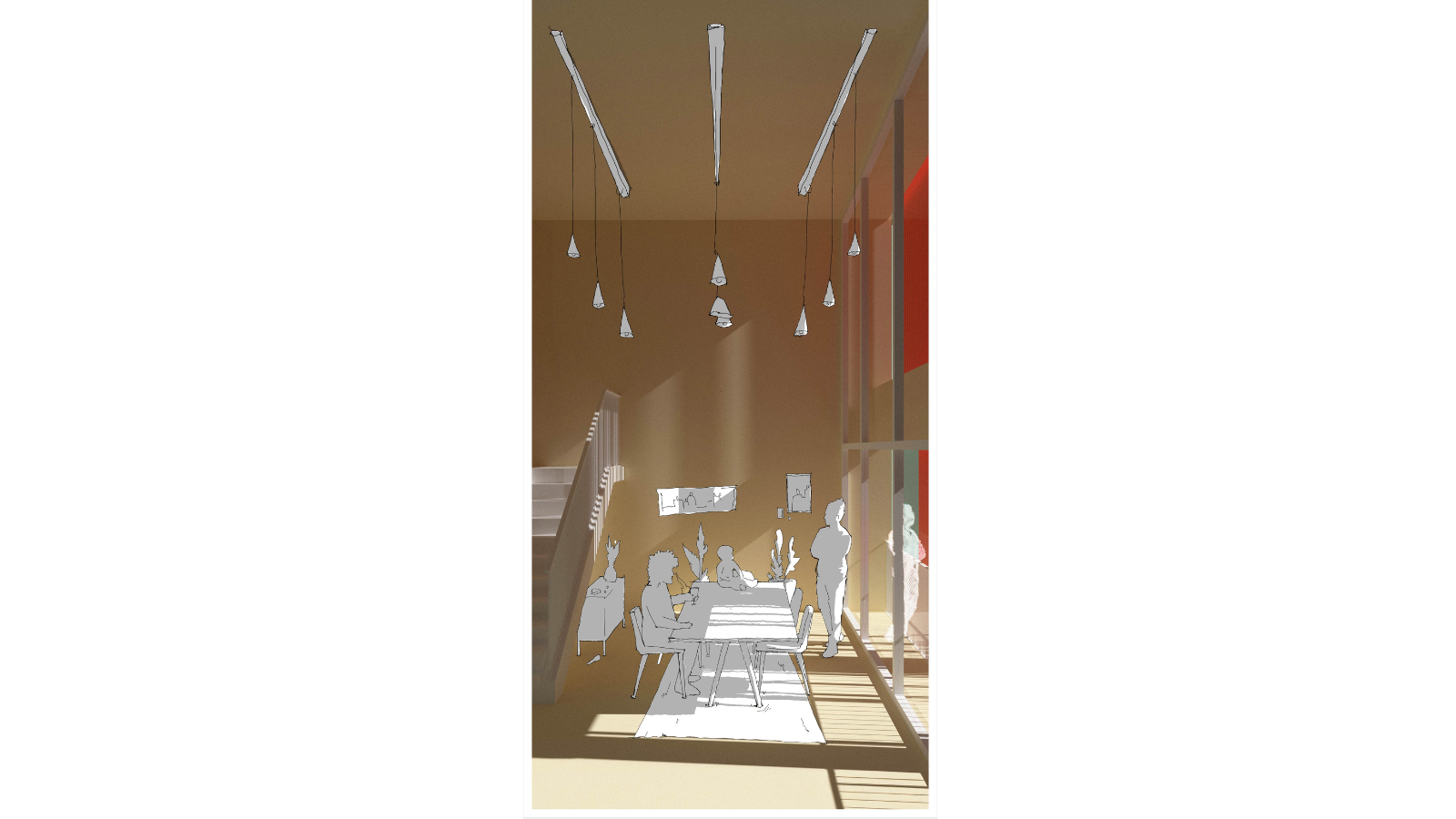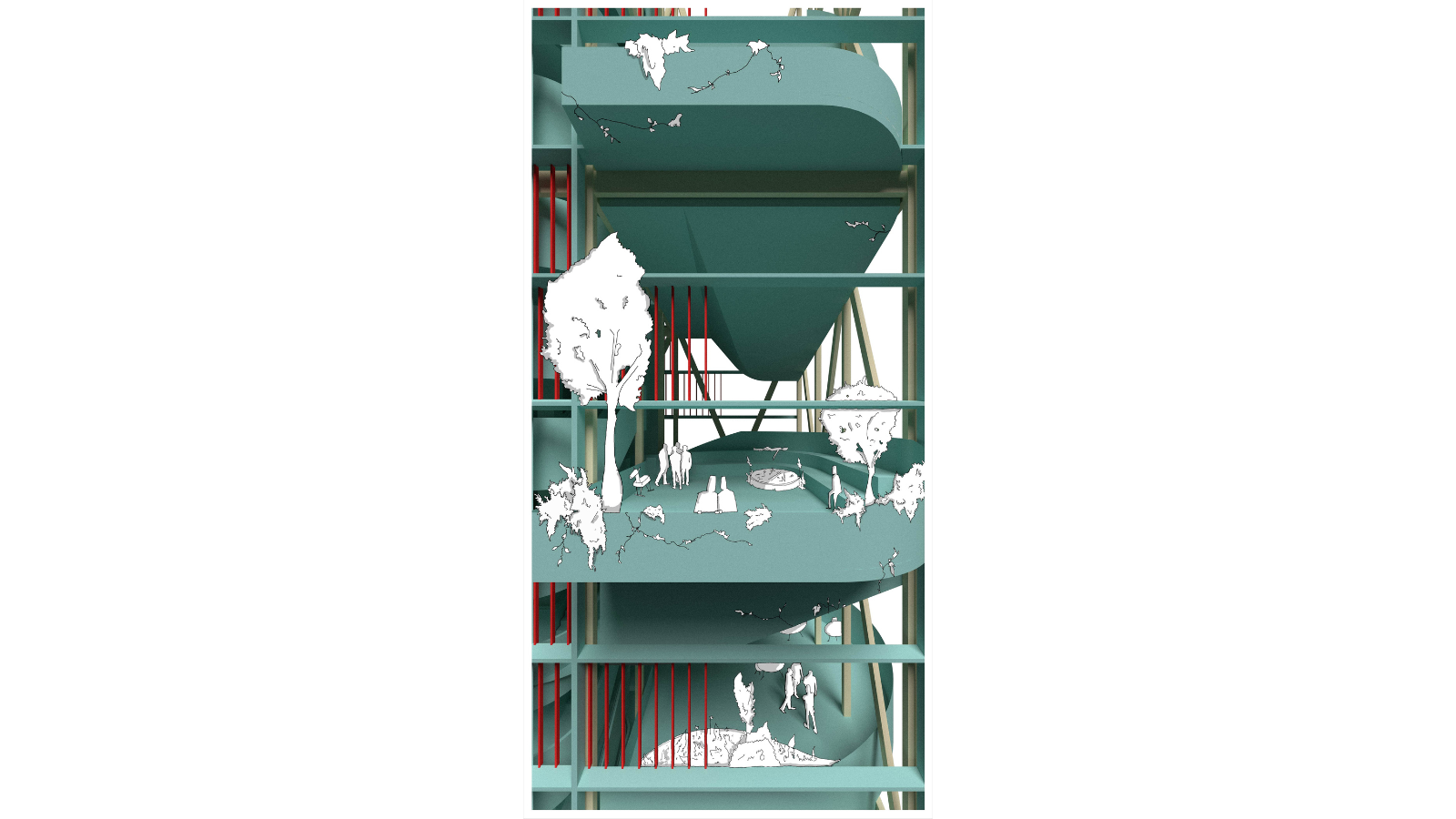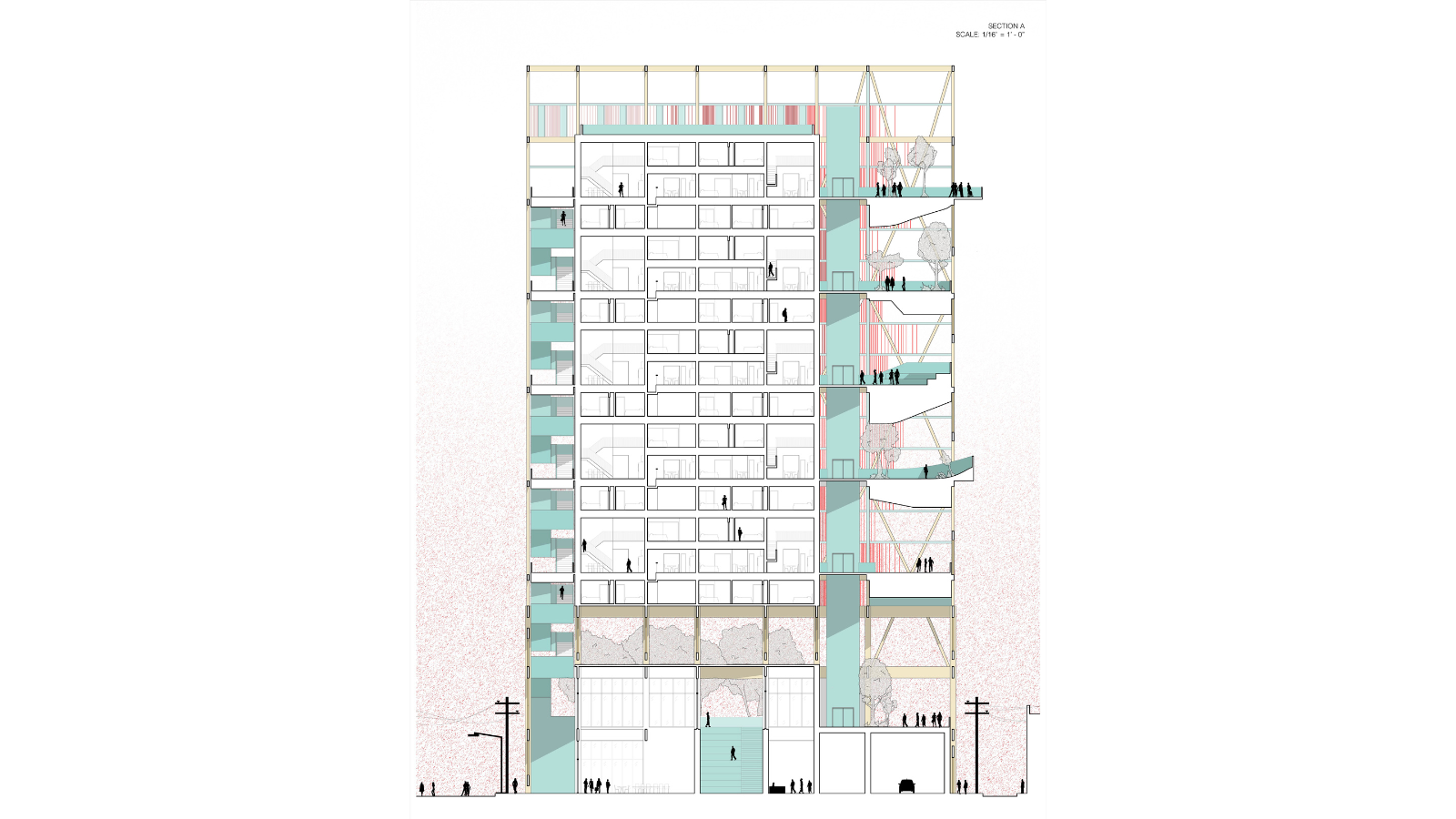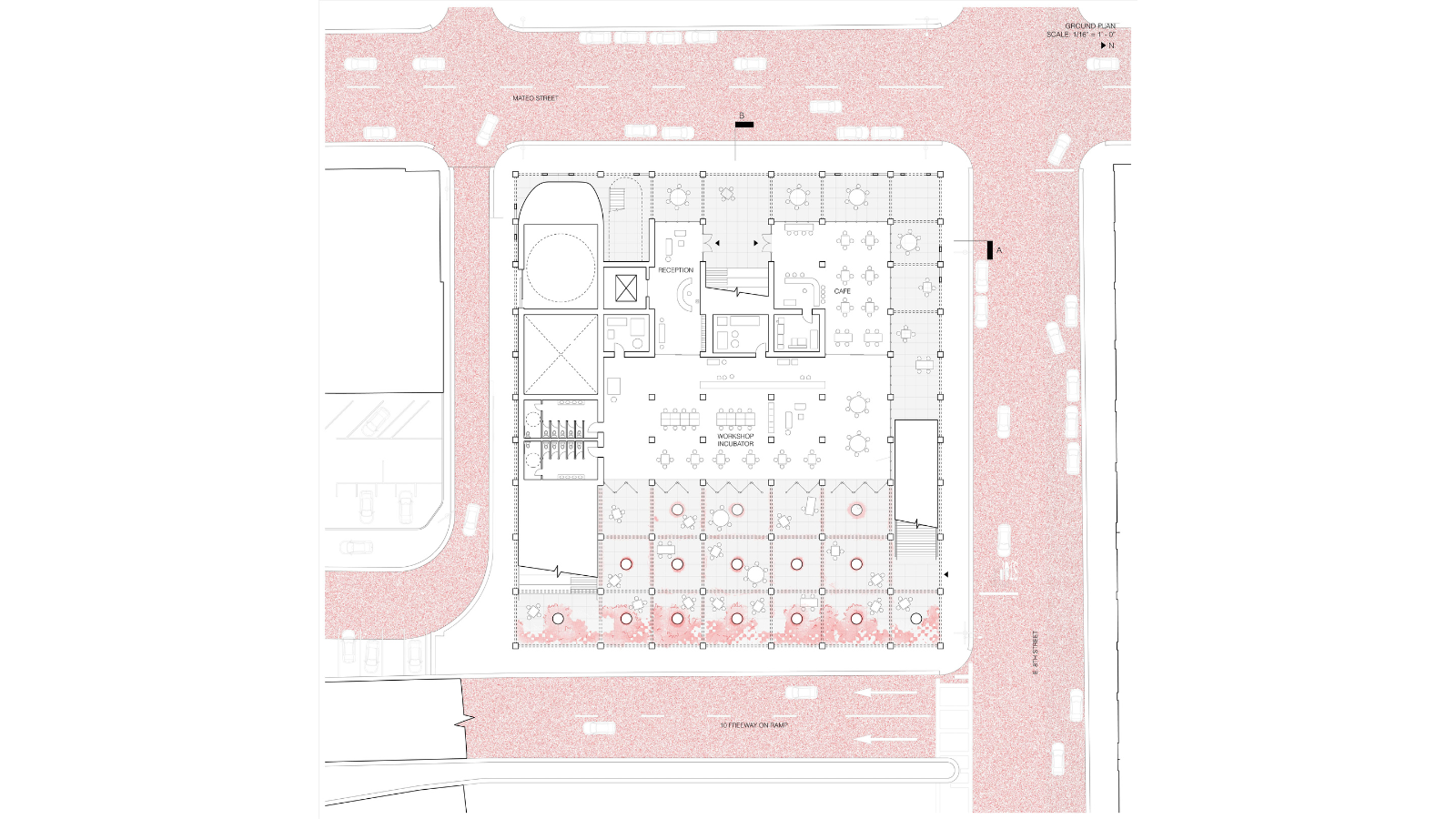
Ahmad Chehab
California State Polytechnic University, Pomona
Professor: Sarah Lorenzen
“Towards a New Infrastructure” proposes a sustainable, scalable strategy for developing underutilized lots near Los Angeles’ freeways into mixed-use spaces. Inspired by Santa Monica’s 2021 pilot housing program, it aims to provide affordable housing and create publicly accessible urban parks in freeway-adjacent areas. The project envisions transforming these spaces, traditionally seen as undesirable, into hubs that reconnect communities and integrate green spaces, in line with the city’s 2040 plan. Located near the East Los Angeles interchange, the development aims to reframe freeways from barriers to opportunities for urban cohesion. This approach seeks to address housing shortages while promoting sustainable, long-term urban growth.
Towards a New Infrastructure
Towards a New Infrastructure” is a forward-looking urban initiative designed to provide the city of Los Angeles with a sustainable, scalable, and replicable solution to the challenges of urbanization, particularly for underutilized and traditionally undesirable lots near the city’s extensive freeway network. The project takes inspiration from a pilot program launched by Santa Monica in 2021, which focused on creating city-funded housing for families displaced by the construction of the I-10 Freeway. This project, however, proposes to expand on that idea within Los Angeles itself, specifically targeting areas adjacent to freeway infrastructure that historically have been overlooked for development.
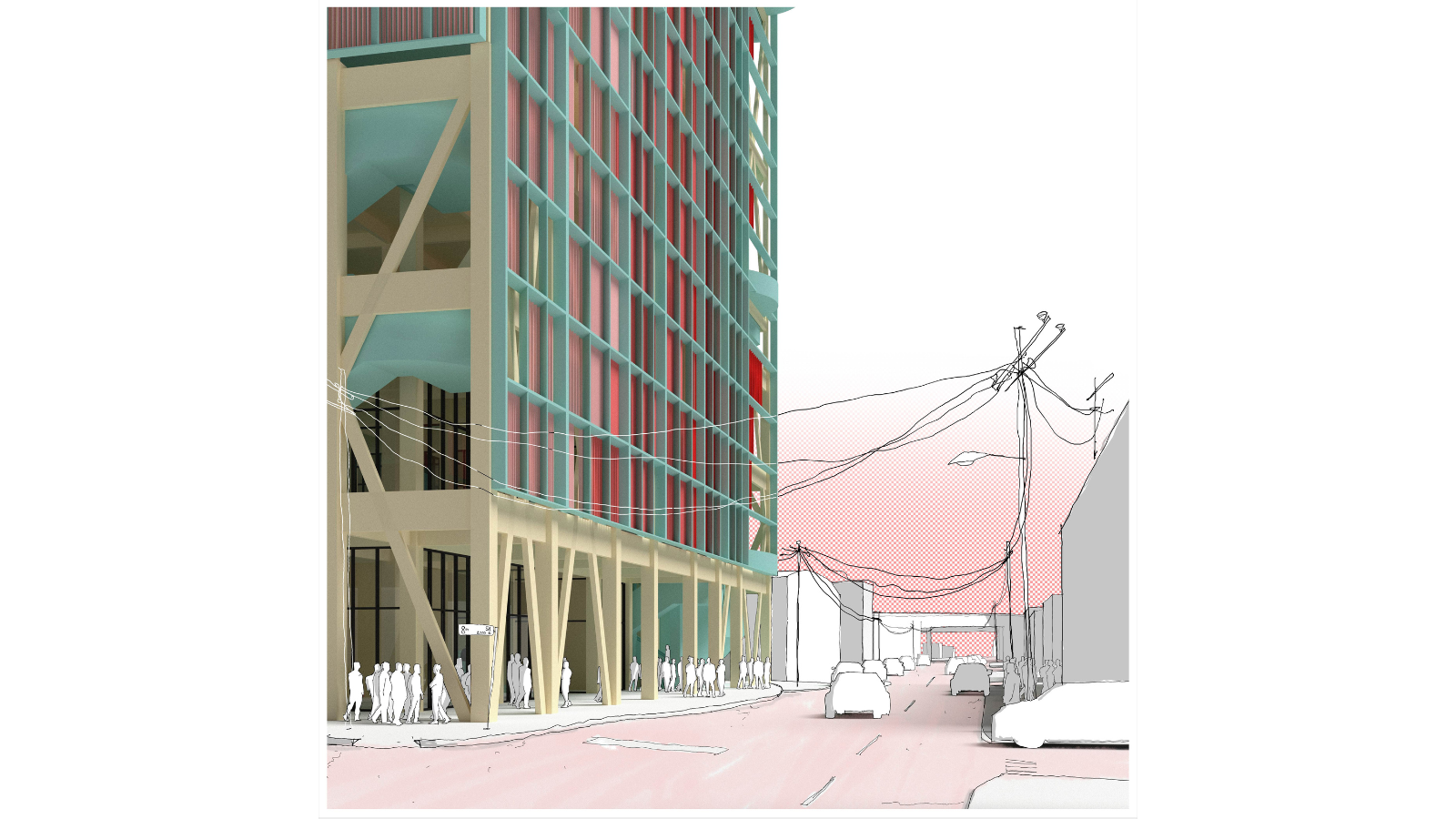
The site chosen for this particular project is adjacent to the 8th Street Freeway on-ramp, located just west of the East Los Angeles interchange—a hub that accommodates over 550,000 vehicles daily. This site is deeply symbolic in the context of Los Angeles’ urban history, representing both the city’s reliance on its freeway system and the social, economic, and cultural divisions that such infrastructure has often created. The project seeks to reinterpret the role of freeways, not as dividers, but as opportunities to reconnect fragmented urban spaces. The overarching vision is to transform these freeway-adjacent lots into hubs of connection, where new urban spaces can emerge, fostering a sense of community and belonging in areas that have historically been neglected.

One of the central goals of the proposal is to challenge the perception of freeway-adjacent lots as undesirable, and instead, reframe them as valuable sites for urban reintegration. The project presents a unique approach to urban design, where privatized housing for historically disenfranchised communities is integrated with public amenities, particularly open green spaces. This mixed-use development is in alignment with the city’s 2040 plan, which emphasizes the need for more sustainable and equitable urban spaces. In addition to housing, the plan includes the creation of a publicly accessible urban park, which will not only provide much-needed green space in the city’s industrial district but also serve as a symbolic reclaiming of urban space for the community.
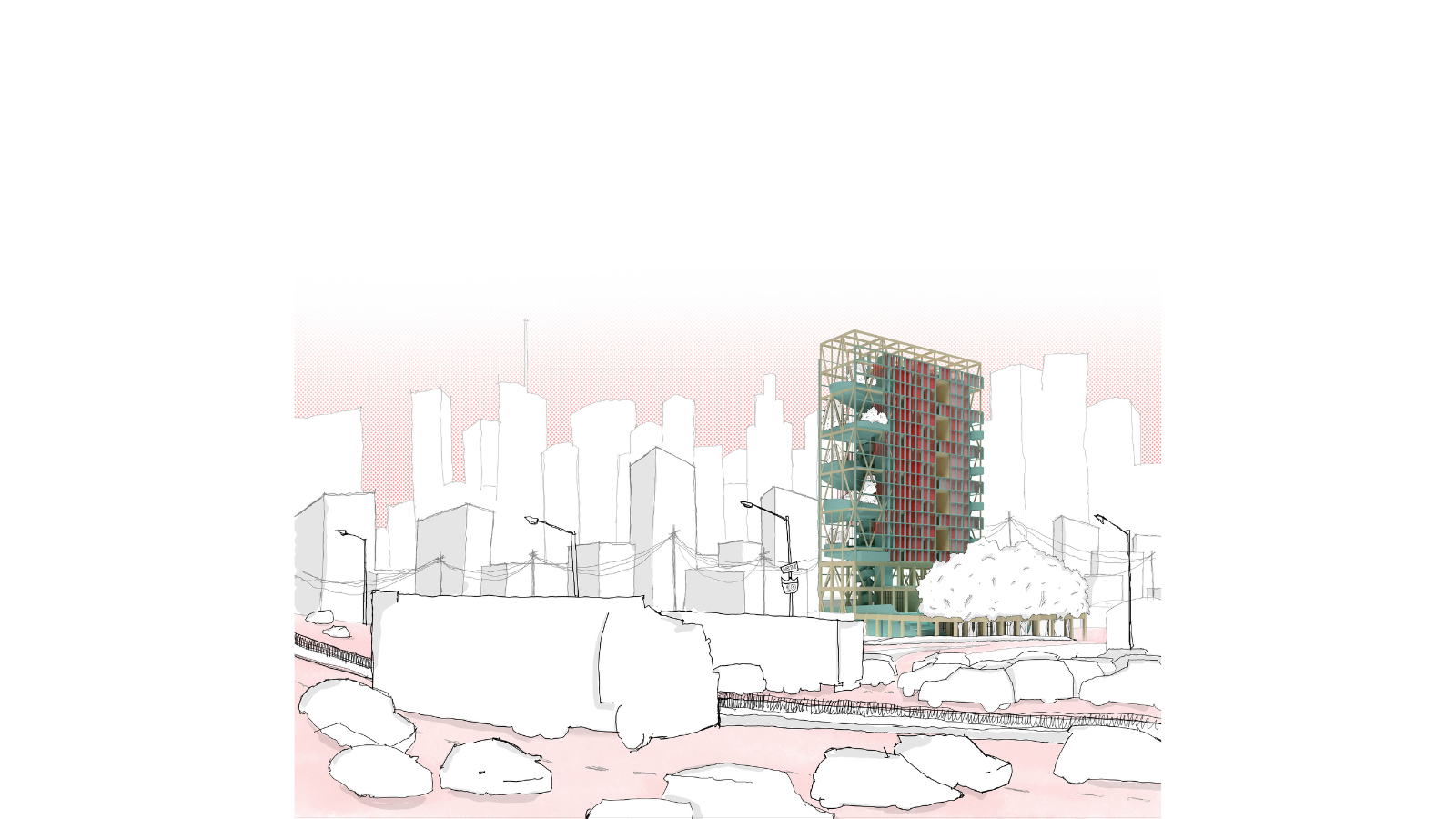
By incorporating both residential and public spaces, the project aims to address multiple issues at once: providing affordable housing, increasing access to green spaces, and redefining the relationship between Los Angeles residents and their city’s infrastructure. It also emphasizes the need for sustainability, ensuring that the development is not just a short-term solution but a long-term investment in the city’s future. The incorporation of green spaces within the development is particularly important given the city’s ongoing struggle to provide adequate public amenities in highly industrialized areas.
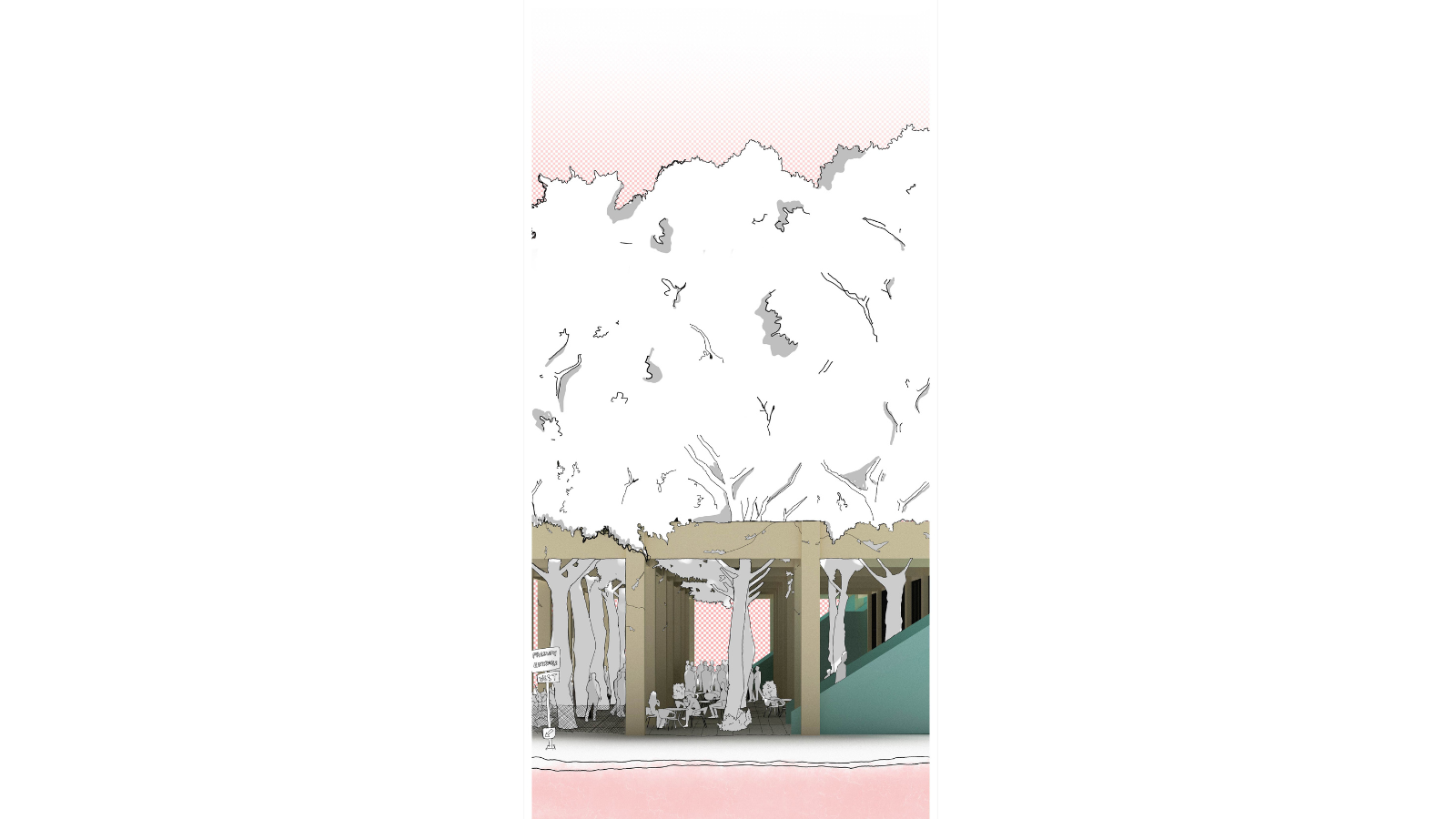
Ultimately, “Towards a New Infrastructure” seeks to hold Los Angeles accountable for ensuring that future urban development is inclusive, sustainable, and serves the needs of all its residents. By turning historically undesirable lots into thriving, mixed-use developments, the project proposes a new way forward for urban spaces that have long been neglected, offering a vision of the future that prioritizes connection, sustainability, and community well-being.
